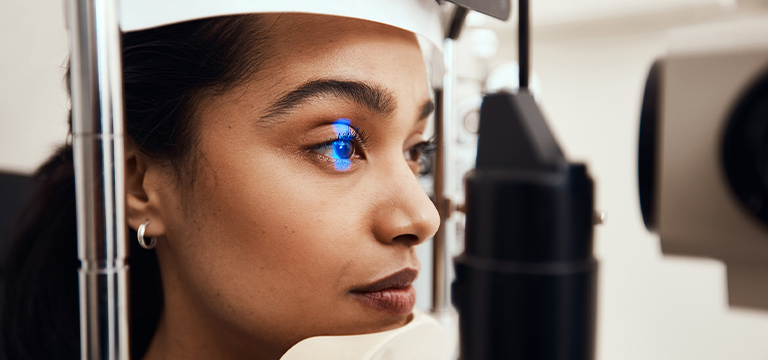They say that eyes are the window to your soul. Taking a closer look reveals a window to a fascinating network of components that work together to give us the ability to see.
Here’s how it all works:
Accounting for what’s in front and to your side, your eyes have a scope of around 200 degrees in each direction. They pick up on millions of colors, as well as movement and depth. Additionally, they rapidly adjust to ever-changing lighting conditions—bright to dark and bright again.
Your eyes are made of wonderful components. Each part works together to send visual information to your brain. The following process happens almost instantaneously:
- Light enters through the cornea of your eye and goes to your lens. To adjust for light, your pupil grows bigger or smaller.
- Next, your cornea and lens refract (bend) the light to help you focus on what you see.
- When light reaches the retina at the back of your eye, the retina converts the images into electrical impulses or signals.
- Now, the optic nerve takes signals from both eyes and carries them to your brain.
- Your brain interprets what you are seeing. It combines the visual information from both eyes and brings it all together into one clear image.
Let’s start with what you can see in the mirror:
- Iris: the colored portion of your eyes
- Cornea: clear layer that covers the iris comprised of collagen and water
- Pupil: the center of your eye that expands or contracts to control how much light enters your eye
- Sclera: all of the surrounding white area of your eyes
Now here’s a breakdown of what you can’t see in the mirror:
Retina: located in the back of your eyes, the retina converts light into electrical signals
- Within your retina, rods help you see in low light, while cones help you detect color
- Macula: a part of the retina that is responsible for helping you see colors and small details
- Conjunctiva: clear, protective tissue that lines the inside of your eyelids and covers your sclera
- Lens: located behind the pupil, the lens is responsible for sending the light that enters your eyes to your brain
- Optic nerve: connects your retina to your brain, carrying neural signals that are translated into what you see
Find a provider
The right eye care professional is closer than you think. Use the Find a Provider tool to locate a trusted doctor near you. When it comes to getting the right care, seeing is believing.
Source: https://my.clevelandclinic.org/health/body/21823-eyes

